The Lost Paradise of Iranian Homes: A Forgotten Gem in Modern Architecture
WANA (Oct 07) – Imagine standing in a space where a gentle breeze flows, the soothing sound of water and the shade of trees invite you to tranquility. This was the reality of life in traditional Iranian homes: spaces designed to foster peace and harmony.
However, with the rise of modern architecture, much of this serenity has been lost, replaced by buildings focused more on functionality than nourishing the human soul.
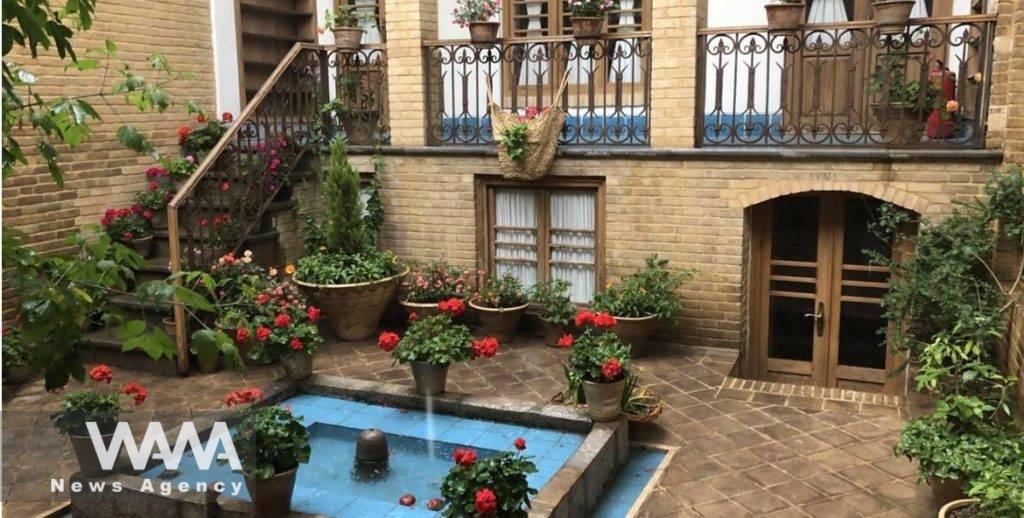
Courtyard In traditional Iranian homes. Social Media / WANA News Agency
Iranian Architecture: A Dialogue Between Culture and Space
One unique feature of Iranian architecture is “introversion,” deeply tied to the cultural and religious values of the people.
Unlike modern designs that often emphasize external connections with large windows, Iranian homes were built to preserve privacy, especially for women and children. This design aligned with Islamic cultural principles, which place great importance on modesty and the separation of public and private spaces.
As a result, these homes appeared simple and unadorned from the outside, but inside, they were full of elegance and beauty. While the exterior walls were plain, the interiors were vibrant with light, color, and life.
This contrast between outer simplicity and inner richness reflected a cultural focus on the inner self. As the great Persian poet Rumi said, “Look within, for outward appearance is deceiving.”
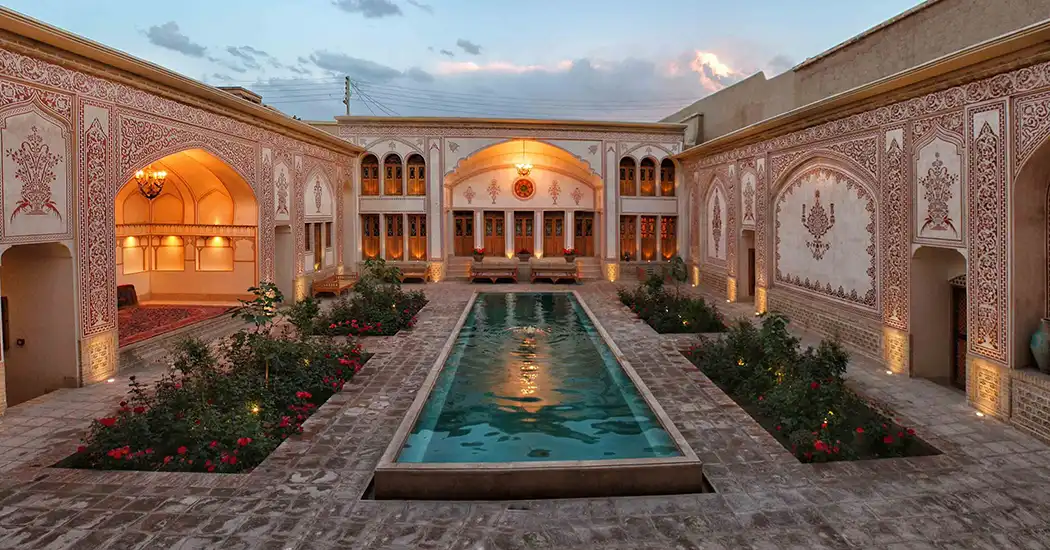
The Rahbi House, a relic from the Qajar era, is located in Kashan, Iran. Social Media / WANA News Agency
The Courtyard: A Symbol of Heaven on Earth
At the heart of these homes was the courtyard, a sacred space embodying the idea of paradise. In the Quran, heaven is described as a garden filled with flowing water and lush trees.
Iranian architects brought this image to life in the center of their homes. The courtyard, with a central pool and tall trees surrounding it, became a sanctuary where families gathered, away from the stresses of the outside world.
Historic houses in Yazd, for example, showcase this with their central courtyards and porches facing inward, providing a cozy and peaceful space for family life.
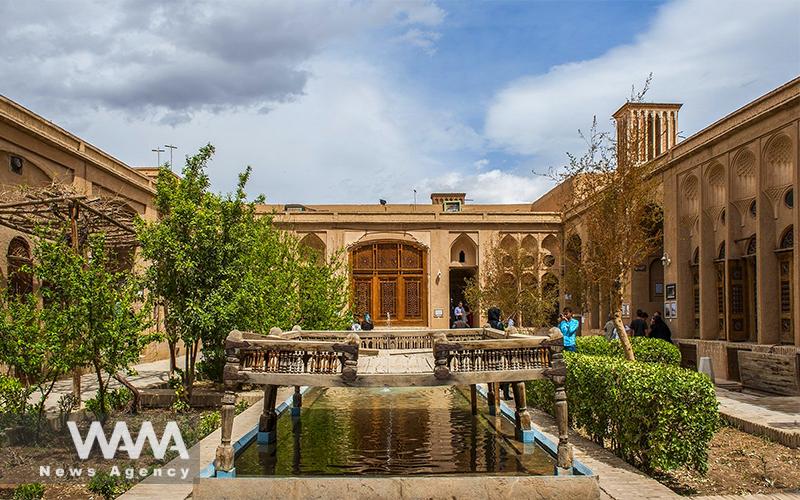
The Lari House located in one of the oldest neighborhoods of Yazd, Iran. Social Media / WANA News Agency
Similarly, the Rahbi and Tabatabaei houses in Kashan, with their large courtyards and pools, are prime examples of courtyard-based architecture, symbolizing tranquility and beauty.
But the courtyard was not merely decorative; it served practical purposes as well. In Iran’s hot and dry climate, the courtyard helped regulate the temperature, providing cool shade in the summer and protecting against cold winds in the winter.
This intelligent design not only showcased the aesthetic brilliance of traditional Iranian architecture but also its practicality and efficiency.
The Decline of Courtyard Homes in Modern Times
With urbanization and modernization in the 20th century, traditional courtyard homes were replaced by apartment buildings and high-rises. Living spaces became smaller, and the inward-focused designs of old were overlooked due to population growth and space constraints.
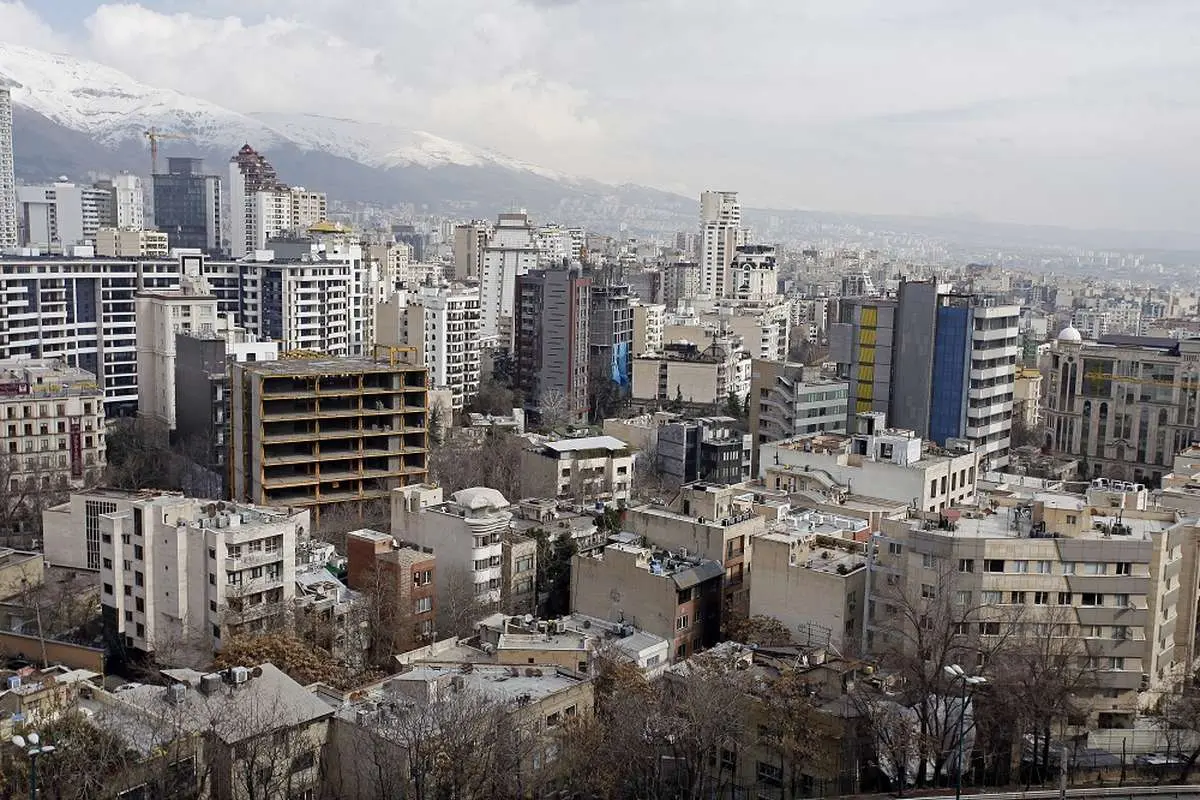
Today, many Iranians live in high-rise apartments with concrete walls, drawing thick curtains over windows to maintain their privacy—a behavior reminiscent of old design principles, but less effective and impactful.
This shift is not unique to Iran; globally, modern architecture has often sacrificed the emotional and psychological needs of people for efficiency and speed. Research shows that the lack of connection to natural environments in cities can increase stress and lower the quality of life, highlighting the timeless wisdom of traditional architecture.
Reconnecting with the Past: A New Movement in Architecture
Despite the dominance of modern architecture, recent years have seen a renewed interest in traditional Iranian design, not only in Iran but worldwide.
Architects are beginning to recognize the value of introverted designs and are incorporating elements like courtyards and private gardens into modern buildings.
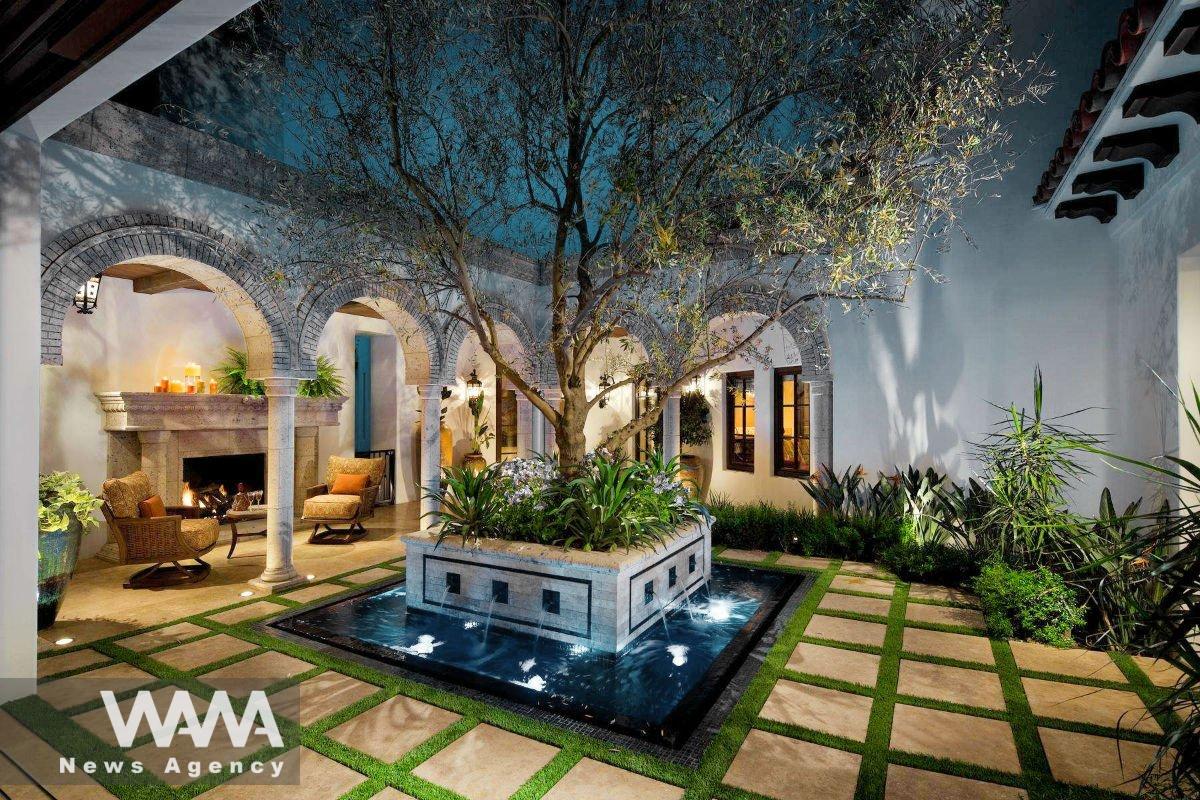
The addition of courtyards and gardens to modern buildings. Social Media / WANA News Agency
For example, new projects by Iranian architects attempt to integrate traditional elements into contemporary architecture. One such project is the National Library of Iran, which draws inspiration from traditional courtyard spaces, preserving a connection with nature.
Projects that have received the Aga Khan Award, particularly in the Middle East and North Africa, are inspired by Iranian architecture, blending its elements with modern materials and technologies.
These new designs focus on creating tranquil havens within bustling cities, reminding us that architecture can be more than just shelter—it can offer spaces for reflection and peace.
In Singapore, some architects have adopted similar ideas, designing green spaces within high-rise towers, allowing residents to enjoy the benefits of a garden without leaving their homes. These designs, like traditional Iranian courtyards, provide natural ventilation, regulate temperature, and create peaceful, pleasant living environments.
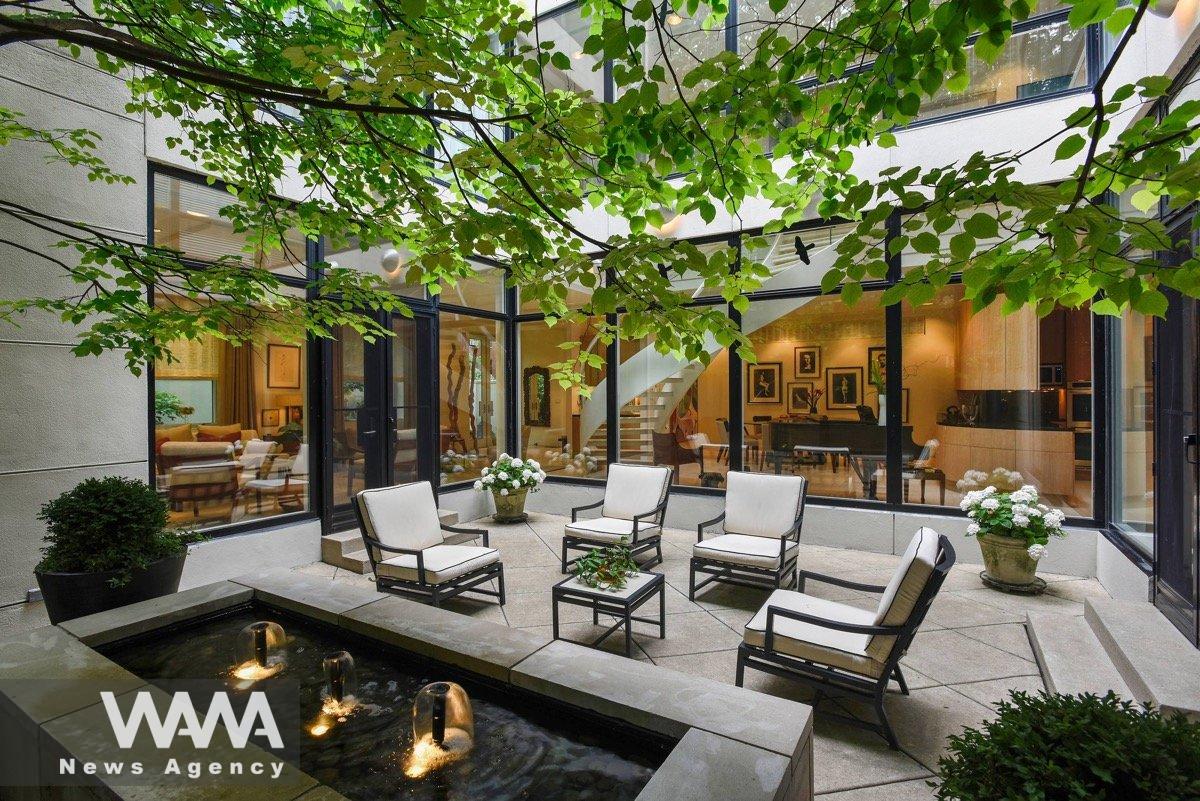
The Importance of Iranian Courtyard Architecture for the World The concept of courtyard homes and introverted architecture holds valuable lessons for everyone: architecture is not just about walls and roofs; it’s about creating spaces that meet human needs for connection, privacy, and balance.
Iranian architects of the past understood this well. Their designs not only addressed physical needs but also considered the mental and emotional well-being of individuals, creating environments that encouraged contemplation and calm.
In an era when modern architecture often prioritizes speed and efficiency, returning to traditional architectural elements is not merely an aesthetic choice—it is a response to the pressures of urbanization and a growing understanding of the impact built environments have on well-being.
As architects worldwide strive to create spaces that nurture well-being, the timeless wisdom of Iranian courtyard architecture offers a roadmap for a more sustainable and human-centered future.

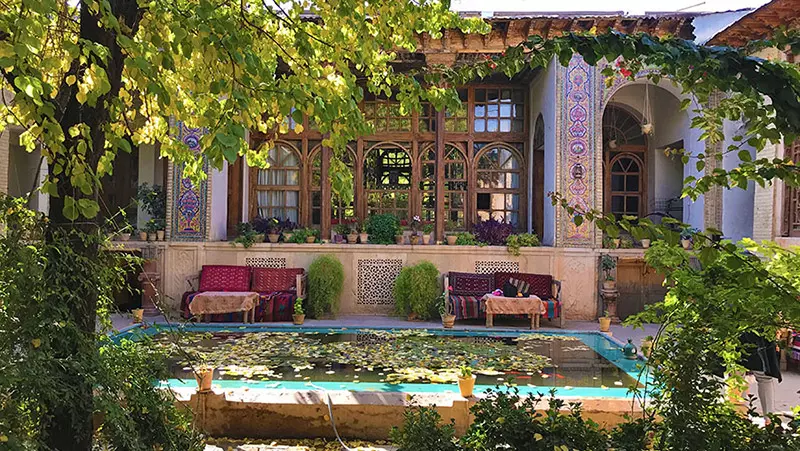












User comments